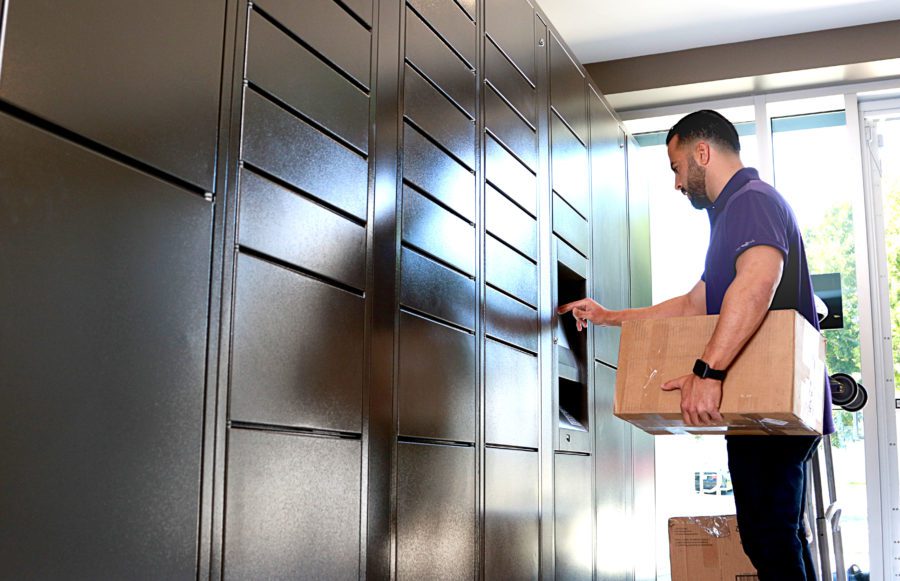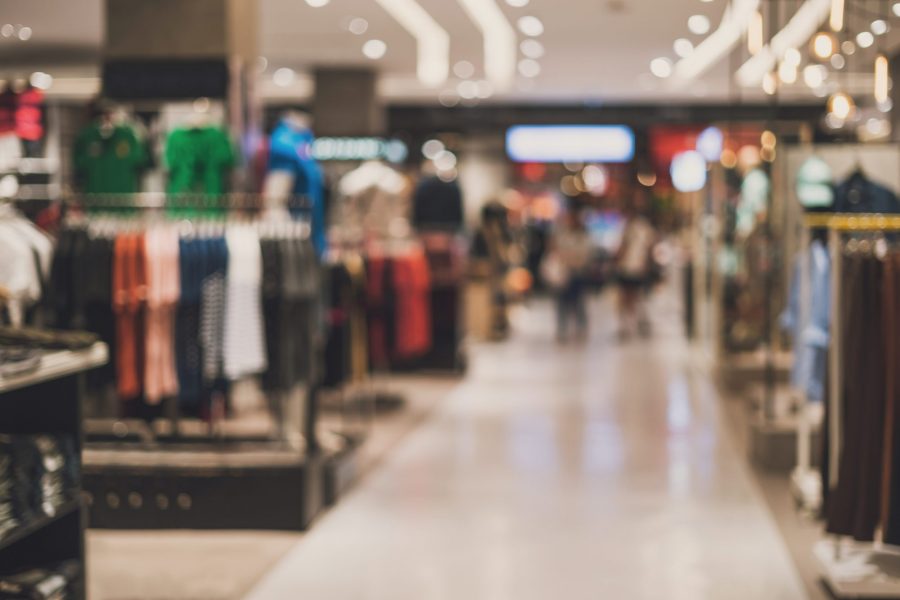
Our Blog
What is Recommerce and How Does it Work?
Written by: Parcel Pending
6 Min Read
Published: February 7, 2022
Updated: November 10, 2023
The new term on every major retailer’s lips is recommerce. This blog takes a deep dive into what recommerce is, how it works, why the recommerce market is so popular, and why retailers are jumping into this resale pool.
Recommerce Defined
Whether pre-owned goods/pre-owned items are labeled as recommerce, secondhand, returned item, used, resale, vintage, antique, or part of the circular market, the definition is simply a new digital marketplace whereby pre-owned merchandise/goods are being resold.
The Reasons Why Recommerce is Exploding
The explosive growth of growing demand in the resale market is causing a head whip effect by retailers. Estimates are that the resale market is projected to double in the next five years, reaching $77 billion, and will grow at 11 times the rate of traditional retail.1,2
A number of several converging factors are causing the growth in reselling pre-owned items, including:
A Focus on the Environment
Sustainability has risen to a top concern for consumers, especially younger consumers. One in three consumers care more about wearing sustainable apparel than pre-pandemic, and 45% of millennials and Gen Z refuse to purchase from brands and retailers that are not sustainable.3 Over 17 million tons of textiles and used clothing end up in landfills annually.
New Minimalist Mindset
With so many retail and entertainment outlets closed during the pandemic, consumers took a fresh look at their buying habits. In a n L.E.K. Consulting survey, 57% said that COVID-19 helped them realize that some of their pre-pandemic discretionary spending was unnecessary.4 As one consumer explains in a report by thredUP: “Society places value on having the latest styles over sustainability. One day, I looked at my closet and realized it was filled with disposable pieces I didn’t love, so I decided to change the way I shop. My solution was to start buying quality secondhand pieces over fast fashion. It turns out great style doesn’t have to cost a pretty penny.”
A Shift in Perception & Supply Chain Crisis
Recent supply chain disruptions have forced many consumers to reconsider pre-owned goods as a viable alternative to long waiting periods for new products. The frenzy in home remodeling coupled with pandemic relocation, for example, caused a run-up in used item prices in the furniture market for everything from end tables to antiques to sofas. Chairish’s business in 2021 was up 42 percent compared with 2020.5 In 2021, Kaiyo had five times the revenue it had in 2019. Searches for vintage or antique couches on Etsy increased by 126 percent in 2021 compared with 2019.
Inflationary Concerns
United States inflation jumped to a four-decade high of 7.5% annual rate causing pricing panic among consumers.6 Buying secondhand goods is a fraction of the cost of new.
Why Retailers are Jumping into Recommerce
In 1995, both eBay and Craigslist were founded and are considered the first wave of the resale market. The second wave included contactless retail direct-to-consumer apps with leading brands such as thredUP, Poshmark, and Depop. We are now entering a new wave whereby brands themselves create their own used marketplace. These brands include Lululemon, Eileen Fisher, Nike, REI, Patagonia, and John Fluevog (the Fluemarket).
Retailers are jumping into the recommerce market for very compelling reasons as it:
#1 Brings in New Customers
50% of secondhand shoppers tried a new brand.7 In other words, recommerce works as a gateway to the brand at a much lower price with the hope of eventually turning them into a direct shopper.
#2 Unlocks Customer Data & Insight
One of the key powers today is owning customer data. With recent privacy changes by Apple, Android, and Facebook, first-party data is critical; it allows retailers to see emerging trends and make actionable changes.
#3 Boosts Brand Value
62% of consumers said that they’d purchase more from a brand that officially partners with a resale platform/resale marketplace or company. It’s no wonder then that Macy’s joined forces with ThredUp to place mini – stores inside of the department store behemoth, part of their efforts to improve their in-store shopping experience. Joint venturing has a co-branding advantage as it increases the reputation of both the resale brand and the retail partner.
#4 Provides an Outlet to Unload Extra Stock
By using a resale platform, retailers are able to easily set up a resale market without the cost and hassle of creating their own. At the same time, retailers can unload out-of-season merchandise, poor performers, and what the industry itself calls “dead stock.”
#5 Retains the Brand Image
Retailers who use their own marketplace to sell products (e.g., a gently used returned item) that might otherwise go to liquidators and off-price resellers do so without tarnishing their brand image. It also prevents these retailers from having to have huge online sales and drastic price reductions.
#6 Reduces Waste
Here’s a whopper of a statistic: according to a recent report, “every percentage point increase in the circular economy market – including renting, reselling, repairing, refurbishing – could save 13 million tons of CO2 equivalent. This model is expected to reduce the fashion industry’s emissions by 13 million tons of CO2 equivalent by 2030, which accounts for 8.5 percent of the total global emissions reduction planned”.8
#7 Increases Revenue
When retailers themselves set up a used marketing platform, they generate revenue that otherwise would go to an outside reseller. Even Rent the Runway started its own resale site selling luxury items that were previously leaking sales to Poshmark, TheRealReal, and others.
Strategies for Creating a Successful Recommerce Platform
Retailers can reap the rewards of an online resale market by following these guidelines:
#1 Make it Easy for Customers
One of the secrets to success for thredUP was its easy sign-up page and pre-paid shipping bag. Keep your required elements minimal.
#2 Embrace Smart Lockers as a Drop-Off Location
Consumers flocked to contact-free solutions, like Buy Online, Pick-up in Locker (BOPIL) during the pandemic, recognizing the ease and convenience of picking up and returning in smart lockers without waiting in line or waiting for assistance. Retailers can consider leveraging these smart pick up and drop off lockers as a distribution or return system.
#3 Incorporate Digital Authentication
Allow consumer resellers to authenticate their pre-owned goods via photos and technology. The goal is to avoid would-be sellers dropping off merchandise to resell only to discover that the retailer won’t accept it.
#4 Value In-Store Credit Higher than Cash
To incentivize shoppers to spend the money they’ve earned, make sure to offer at least a 10% bonus for using their earnings within your own branded environment.
The recommerce market is a high-stakes game-changer that works for consumers, shoppers, and the environment. To discover how you can leverage lockers to facilitate your recommerce strategy, contact a Parcel Pending customer representative today.
Sources:
- Sustainable Brands. Report: Circular Apparel Market Projected to Reach $77B by 2026. (2021, June 29). https://sustainablebrands.com/read/waste-not/report-circular-apparel-market-projected-to-reach-77b-by-2026.
- Pagano, Aubrey. Alpaca VC. Field Study: The Rise of Recommerce. (2021, July 15). https://medium.com/alpaca-vc/field-study-the-rise-of-recommerce-32c78d08fe0e.
- thredUP. (2021). 2021 Resale Report [Report]. Retrieved from: https://www.thredup.com/resale/#resale-industry
- McKone, D., Picciola, M., DeVestern, L., & McQueen G. L.E.K. Consulting. Priority Reset: Post-COVID-19 Changes Are Around for the Long Haul. (2021, June 30). https://www.lek.com/insights/ar/priority-reset-post-covid-19-changes-consumer-behaviors-are-around-long-haul.
- Koncius, Jura. The Washington Post. Antique and vintage sales have soared, thanks to supply chain issues. (2022, January 26). https://www.washingtonpost.com/home/2022/01/26/antiques-vintage-furniture-popular-during-pandemic/.
- Guilford, Gwynn. The Wall Street Journal. U.S. Inflation Rate Accelerates to a 40-Year High of 7.5%. (2022, February 10). https://www.wsj.com/articles/us-inflation-consumer-price-index-january-2022-11644452274.
- Willersdorf, S., Krueger, F., Estripeau, R., Gasc, M., & Mardon, C. Boston Consulting Group. The Consumers Behind Fashion’s Growing Secondhand Market. (2020, October 20). https://www.bcg.com/publications/2020/consumer-segments-behind-growing-secondhand-fashion-market.
- Berg, A., Magnus, K., Granskog, A., & Lee, L. McKinsey & Company. (2021). Fashion on climate [Report]. Retrieved from: https://www.mckinsey.com/industries/retail/our-insights/fashion-on-climate



